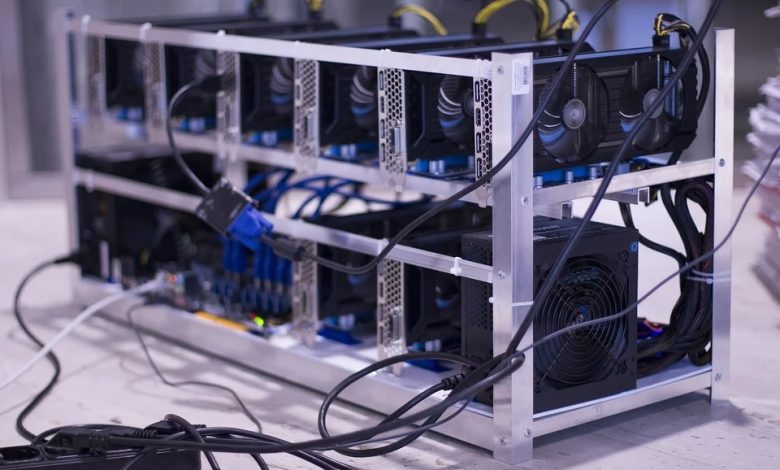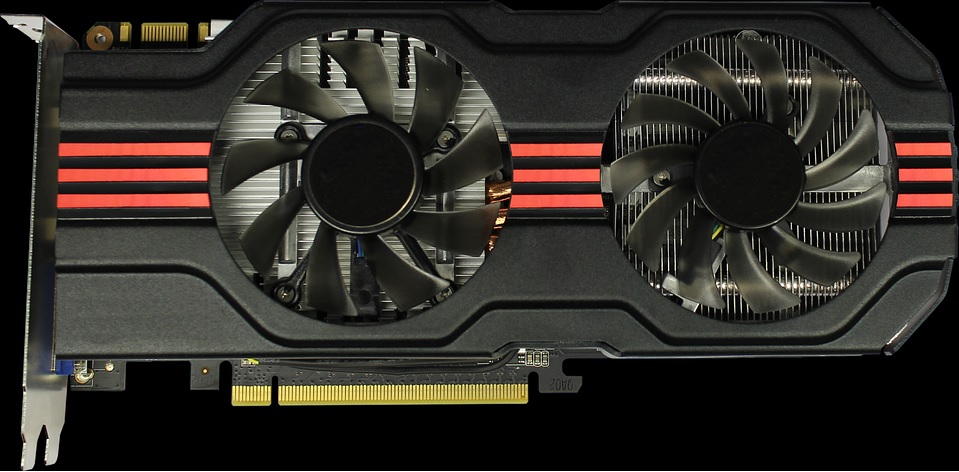
Graphics Card is in charge of displaying a graphic on the monitor. The clearer and faster a picture can indeed be generated, the superior the graphics card is.
Because of its modular structure and replaceable hardware, the IBM PC had become the mainstream computer there at the dawn of the world of computers.
Each PC’s motherboard currently features spaces whereby any third-party producer could enter the hardware necessary to make modern Computer runs, much the same as the original IBM. The graphics card, for example, is responsible for presenting all of the graphics people have seen on the display.
What is Graphics Card?
A graphics card is a piece of hardware that is used to boost a computer’s video memory and improve its screen brightness. It increases the computer’s capability and allows it to perform higher-level tasks. The picture performance is measured by the card’s capabilities.
It is critical for gaming and video editing on a computer. To begin, every game requires graphics memory. The amount required varies by game genre, and the parameters are described on the game box.
Well with the greatest graphics cards, users can play the game in 1080p or even 4K while sacrificing quality. Even if People are not a gamer, a much more capable graphics card in the PC will let anyone access, generate, and manipulate high-resolution pictures and videos, produce intricate digital artworks, and construct 3D scenes and modeling.
The best graphics cards could assist anyone in doing so more quickly, helping users to improve overall productivity.
Example:
- Acer Predator
Nvidia GTX 1050 4GB Graphics Card.
- Alienware 17
Nvidia Geforce GTX 1070 8GB Graphics Card.
Evolution of Graphics Card
Although IBM launched the first one in 1981, graphics cards have gone a long way. The card, known as a Monochrome Display Adapter (MDA), allowed for text-only presentations on a black screen in green or white.
Through an HDMI or DisplayPort connector, most graphics cards and integrated CPUs could now send an HD (1,920 x 1,080 pixel) signal. Ultra HD 4K (3,840 x 2,160) video is commonly produced by independent cards, even with higher resolutions achievable on higher-spec GPUs.
Understanding Display Card
Even though people don’t believe that information communication technology is aesthetically intensive, having a specialist graphics card on the computer can indeed be advantageous.
A video card in a computer, by necessity, performs the mathematical computations required to show pictures and movies quickly. It usually includes specialized random access memory (RAM) chips for storing data relating to visual media, as well as a specialist processor chip called a graphics processing unit (GPU) that is tuned for dealing with video.
Read Also:-
- Graphics card vs Processors(GPU And CPU)
- New AMD RX 6500 XT: 3 Graphics Cards You Should Buy Instead
- EVGA GeForce RTX 3090 FTW3 Ultra Gaming Graphics Card Drops to $1349 at Amazon
Rather than with the computer’s primary central processing unit, programmers of video-intensive programs construct sub-sections of their application that immediately control the GPU. So because GPU processes are specialized supervised while the CPU is a broad sense instrument, choosing a powerful graphics card generally outperforms improving a computer’s broad sense CPU or RAM chips in terms of video efficiency.
What to Know about Graphics Cards?
A graphics card is a printed circuit board with a microprocessor, RAM, and other elements that appears like a mini version of the pc motherboard. It can sometimes be alluded to this as a graphics processing unit, or GPU, however, the GPU is actually simply one of the card’s components.

GPU
- Graphics Processing Unit (GPU) is an abbreviation for Graphics Processing Unit.
- The GPU’s performance is determined by its model.
- A slot termed as a slot on the motherboard is used to connect the graphics as an external unit.
- It’s really the graphics card’s brain, and it is responsible for the visuals people have seen on the monitor.
Types of GPU
It comes in two major forms:
- Integrated
It is permanently included in the motherboard and cannot be changed or removed. This can be found in laptops and low-cost desktop PCs. These visuals are often slow and unsuitable for applications like as gaming or commercial graphics development.
- Discrete
It is a hardware external graphics card that is installed as an optional feature on a motherboard. Most folks might not always require an external graphics card when working on a computer. Generating files, conducting office work, viewing movies, listing tunes, and so on may still not necessitate the use of a graphics card.
However, those who play high games or do content creation may require an extra element, such as a graphics card.
Modern graphics cards are highly powerful gadgets that function similarly to remaining computers in some aspects. They are by far the most complex elements in a computer, especially high-end graphics cards specialized for gaming and sophisticated graphics processing.
Should not only draw 2D images like windows and documents, but, the top current graphics cards could also create lifelike, high-resolution 3D graphics in real-time without any need for which was before material. They’re necessary for graphics production, including photography and video, since they can alter and analyze a large number of images instantaneously.
Ray Tracing
Ray tracing is a method that graphics cards are becoming capable of implementing. Ray tracing is a 3D graphics technique that involves tracking the course of each laser pulse in a picture and properly modeling its impact on the image’s shapes and materials.
Ray-traced visuals are extremely lifelike and could previously only be produced in advance using a lot of computer power. Video games will increasingly rely on ray-traced graphics to produce cinema-quality graphics generated instantaneously as graphics cards with ray-tracing capability become more affordable.
Types of Graphics Cards
Almost all graphics cards are made by two competing companies: Nvidia and AMD. Whatever graphics card users buy or find within the computer, it’s almost probably made by one of the other businesses or a third-party company that has licensed the expertise.

This makes buying a graphics card easy because, even if there are many firms producing graphics cards, users could always compare them even though they all have the same fundamental technology. In other words, whether anyone purchases an Nvidia GeForce 2070 GPU from Asus, MSI, Gigabyte, or Nvidia, it will perform similarly.
AMD is a strong rival of Nvidia, and the two organizations occasionally outperform one another in terms of top efficiency. However, on average, the top AMD cards behave similarly to the greatest Nvidia cards.
Nvidia
The Ampere architecture is used in Nvidia’s latest current line of gaming GPUs. The 30-series GPUs (RTX 3070, 3080, or 3090) are by far the most common and efficient, with related measures increasing as even the number increases. If users don’t really need absolutely snipping, the RTX 20 series is still a good alternative, as it supports innovative techniques like ray tracing.
Read Also:-
- Samsung Teases Exynos 2200 With AMD’s RDNA 2 Graphics Coming January 11th
- What Is 3D Animation ? – IGW – Infographic World
Nvidia does have a huge spectrum of GPUs, not just headline devices, that cover the low-end through the very high-end of the commercial GPU marketplace.
As of late 2020, these are some of the most important Nvidia gaming GPUs:
| GPU | CUDA Cores | RT cores | Tensor cores | Base GPU clock (MHz) | Boost GPU clock (MHz) | RAM Type | RAM Standard config (GB) | RAM Bandwidth (GB/s) | RAM Width | TDS (Watts) |
| GeForce GTX 1080 | 2560 | N/A | N/A | 1607 | 1733 | GDDR5X | 8 | 352 | 256-bit | 180 |
| GeForce GTX 1080 Ti | 3584 | N/A | N/A | 1480 | 1582 | GDDR5X | 11 | 484 | 352-bit | 250 |
| GTX 1660 Ti | 1536 | N/A | N/A | 1500 | 1770 | GDDR6 | 6GB | 288 | 192-bit | 120 |
| RTX 2060 | 1920 | 30 | 240 | 1365 | 1680 | GDDR6 | 6GB | 336 | 192-bit | 160 |
| RTX 2060 SUPER | 2176 | 34 | 272 | 1470 | 1650 | GDDR6 | 8GB | 448 | 256-bit | 160 |
| RTX 2070 | 2304 | 36 | 288 | 1410 | 1620 | GDDR6 | 8GB | 448 | 256-bit | 175 |
| RTX 2070 SUPER | 2560 | 30 | 320 | 1605 | 1770 | GDDR6 | 8GB | 448 | 256-bit | 215 |
| RTX 2080 | 2944 | 46 | 368 | 1515 | 1710 | GDDR6 | 8GB | 448 | 256-bit | 215 |
| RTX 2080 SUPER | 3072 | 48 | 384 | 1650 | 1815 | GDDR6 | 8GB | 495.5 | 256-bit | 215 |
| RTX 2080 Ti | 4352 | 68 | 544 | 1350 | 1545 | GDDR6 | 11Gb | 616 | 352-bit | 250 |
| RTX 3070 | 5888 | 46 | 184 | 1500 | 1725 | GDDR6 | 8GB | 448 | 256-bit | 220 |
| RTX 3080 | 8704 | 68 | 272 | 1440 | 1710 | GDDR6X | 10GB | 760.3 | 320-bit | 320 |
| RTX 3090 | 10496 | 82 | 328 | 1395 | 1695 | GDDR6X | 24Gb | 936.2 | 384-bit | 350 |
AMD
AMD already has a variety of strong gaming GPUs, including that of the flagship Radeon RX 5000 series, which would be the replacement for the AMD RX Vega series and uses the RDNA technology. AMD also provides the 500 series, which, despite being a little older, still provided a better price for 1920×1080 gaming.
AMD also provides GPUs in a variety of price ranges, with more on the way. AMD will bring out a new set of GPUs dubbed “Big Navi” in late 2020, based on the upcoming RDNA 2 technology. These Radeon RX 6000 series graphics cards should be a big step forward for AMD’s GPU lineup.
The following are AMD’s most recent GPUs as of late 2020:
| GPU | Stream Processors | Base GPU clock (MHz) | RAM Type | RAM Standard Config. (GB) | RAM Bandwidth (GB/s) | RAM Width | TDS (Watts) |
| Radeon RX 590 | 2304 | 1469 | GDDR5 | 8GB | 256 | 256-bit | 185 |
| Radeon RX Vega 56 | 3584 | 1156 | HBM2 | 8 | 419 | 2048-bit | 210 |
| Radeon RX Vega 64 | 4096 | 1247 | HBM2 | 8 | 484 | 2048-bit | 295 |
| Radeon RX Vega 64 Liquid | 4096 | 1406 | HBM2 | 8 | 484 | 2048-bit | 345 |
| Radeon VII | 3840 | 1400 | HBM2 | 16 | 1024 | 4096-bit | 300 |
| Radeon RX 5700 | 2304 | 1465 | GDDR6 | 8 | 448 | 256-bit | 180 |
| Radeon RX 5700 XT | 2560 | 1605 | GDDR6 | 8 | 448 | 256-bit | 225 |
Why Does Graphics Card Matter?
Gaming is, for several individuals, the much more hardware-intensive chore they would expect their PC to undertake. It’s no wonder that avid gamers invest countless hours exploring the latest GPU technologies and frequently upgrade their GPUs. Games are built to take advantage of increasing performance as GPUs become quicker, which encourages designers to make increasingly quicker GPUs, creating a vicious cycle.
If gaming isn’t a top priority for oneself, users might not be quite as concerned regarding the GPU’s abilities. Professional programs, on the other hand, routinely make use of such a GPU’s specific computational power, albeit in multiple ways.
Video editing, for instance, could benefit from the usage of a GPU to speed up operations including video encoding and 3D rendering, as well as CAD/CAM software like AutoCAD. Every one of these programs benefits from additional processing power provided by a GPU, however, those created expressly for these purposes gain the most.

How does a Graphics card Work?
The very same rules apply to graphics cards. The graphics card receives information about an image from the CPU, which works in tandem with software applications. The graphics card determines how to give a visual representation by utilizing the images just on display. The material is subsequently sent off to the screen through a wire.
Generating an image from binary data is a difficult task. The graphics card first produces a thin strip out of parallel lines in order to generate a 3-D image. The image is then referred to the following. Illumination, structure, and color are also added. The computer must repeat this operation sixty times per second for fast-paced games. The burden would have been too heavy for the processor to manage without the need for a graphics card to do the required calculations.
This duty is carried out by the graphics card, which consists of four main components:
- A processor that determines what each pixel on the screen should do.
- Memory for each pixel’s content and for capturing and storing finished images
- users will need a display to see the full result.
Choosing a Good Graphics Card
It’s easy to identify an edge graphics card. It does have a large amount of memory and a quick processor. It’s also usually more aesthetically attractive than almost anything else designed to fit on the inside of a computer’s chassis. Many high-end video cards are decorated or come with attractive fans or passive heatsinks.
A high-end card, on the other hand, gives the advantage that most individuals require. People who are using their computers mainly for email, word processors, or social media will find that a CPU with integrated graphics provides all of the essential visual capabilities.
Read Also:-
- NVIDIA GeForce RTX 4090 Ti Revealed to Launch in Q4/2022 for Crypto Mining
- What Is Difference Between Gaming Laptop And Normal Laptop
- Top 5 Best CPUs To Buy On Christmas
For most recreational gamers, a mid-range card will suffice. Gaming aficionados and people who perform a lot of 3-D graphic work are examples of folks who require the power of a high-end card.
The frame rate, which is measured in frames per second, is a strong overall indicator of a card’s performance (FPS). The frame rate specifies how many whole images can indeed be displayed per second by the card. Fast-action games require a picture rate of at least 60 FPS to give excellent animations and scrolling.
The human eye could interpret roughly 25 frames per second, but fast-action games demand a frame rate of at least 60 FPS to continue providing excellent animations and trying to scroll.
Find Out What GPU Users Have in Windows
Open the PC’s Start menu and type “Device Manager” into the search box. Near the top, there should notice a Display Adapters item. When users select the drop-down icon, the name of the GPU should appear.
If users are not sure who developed that microchip, right-click it and select Properties to find who made it—in this case, Advanced Micro Devices, or AMD.
Users could Google the GPU name to discover more about something, or they could just evaluate it to the minimal standards for the game that actually want to play. A greater number generally indicates a stronger card, so a game that demands an RX 580 may well not function on a less powerful RX 480.
If users are comparing these two cards with various naming systems, such as AMD’s RX 580 but the more effective RX Vega 56, users will have to do some digging to figure out which one is more effective and how much the difference in price is.
Find the Manufacturer and Model Number
Well with the help of a third-party program called Speccy, users can easily locate the manufacturer. Download a free edition, run it, and then select Graphics from the sidebar. Scroll down to the Sub vendor entry, which would also tell users who manufactured the original card in the computer—in this instance, Asus.
In this instance, locate the graphics card, detach it, and examine the front sticker for the model number users require. Users may also want to jot down these notes somewhere else so users don’t have to access the computer the next moment really know because the user will really need them!
Features of Graphics Card
Memory
The memory on a graphics card is separate from the memory on the computer. Memory sizes could range from 128MB to 2GB. Humans should purchase a card with a larger memory capacity. Display the results, more colors on the display, and the best production values all come with more RAM.
Multiple Screen Support
Most modern video cards allow users to interact with two displays on a single card. This functionality is essential for video editing, and dedicated gamers appreciate the extra space. Users have the option of seeing two independent Desktops or combining the two monitors into one.
Read Also:-
- Experience the Ultimate Gaming and Creative Performance with NVIDIA Laptops
- New Launched Nvidia GPUs For Mining, Not For Gaming
Gaming and Video Editing
A separate graphics card is useful not just for gamers, but also for individuals who utilize high-end specialized software since it reduces image processing time and provides a high-definition atmosphere.
Connection
Many meanings emerge attach the graphics card to the display, but the connection must be available on both the monitor and the graphics card. These are some of the most common connections for connecting a graphics card to a monitor.
- VGA
- HDMI
- DVI
Some motherboards have many peripherals, allowing us to install multiple graphics cards to improve performance. Currently, many laptops include an incorporated graphics card.
The function of a Graphics card
Visuals cards speed up the creation of photos and graphics on computers. A graphics card contains its own CPU, known as a GPU or graphical processing unit. The motherboard and monitor are connected through the video card. This enables the card to receive data from the CPU and transmit it to the monitor.
Advantage and Disadvantage
| Advantage | Disadvantage |
| A graphics card improves the overall system performance to a greater extent. | Depending on the product, graphics cards are often pricey. |
| The primary function of a graphics card is to enable the player that plays graphically intensive games. | There is still a performance effect whenever there is high definition and colors. |
| The constructed graphics card on a system uses a portion of the system RAM to work. | Graphics cards use more energy. As a result, a tremendous quantity of heat is produced, overheating the GPU. |
| A graphics card can improve overall video potential for contributing to gaming. | If a computer, especially a laptop, has specialized graphics, it becomes bigger and heavier. |
| Whenever new games are launched and consumers update their software packages, the majority of specialized graphics processors have improved driver support. | A graphics card uses more energy than just about any other component on the computer. |
Top 5 Graphics Card
MSI GeForce RTX 3070
Specifications

Pros and Cons
| Pros | Cons |
| GPU performance to beat | Very expensive |
| Up to 8k performance | Very large |
MSI RTX 3090 Gaming X trio
Specifications

Pros and Cons
| Pros | Cons |
| Incredibly powerful | Hugely expensive |
| Stylish RGB | Complicate Design |
Nvidia GeForce GTX 1660 Ti
Specifications

Pros and Cons
| Pros | Cons |
| Very affordable | Not for 4K gaming |
| Solid 1080 and 1440p performance | Modest memory bandwidth |
AMD Radeon RX 6800
Specifications

Pros and Cons
| Pros | Cons |
| Excellent performance | Divisive design |
| Finally, AMD ray tracing | Costly |
AMD Radeon Pro WX8200
Specifications

Pros and Cons
| Pros | Cons |
| Outpaces similar Quadros | No CUDA support |
| Fast | Expensive |
Conclusion
A graphics card, also known as a video card or a display card, is a wire harness in a computer that contains specialized circuitry that allows it to show high-quality visuals at a fast rate. They’re found in most modern computers because they’re often linked with video gamers trying to get much more out of their games.
They’re also handy for wide-ranging applications such as retouching photographs using Adobe Photoshop or editing corporate videos.






